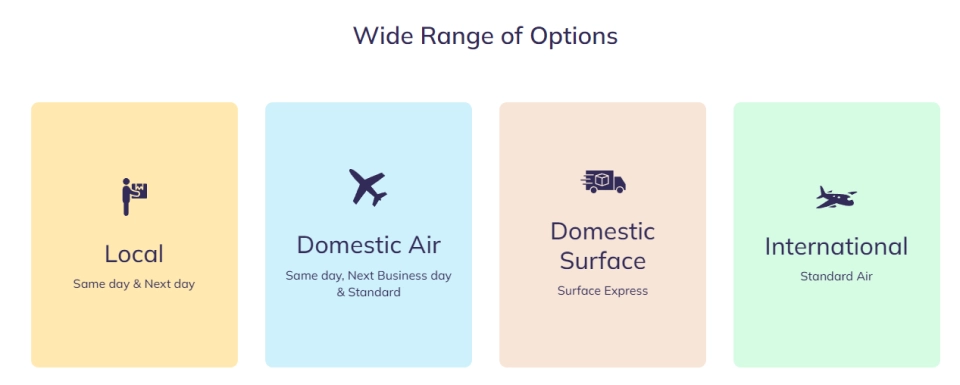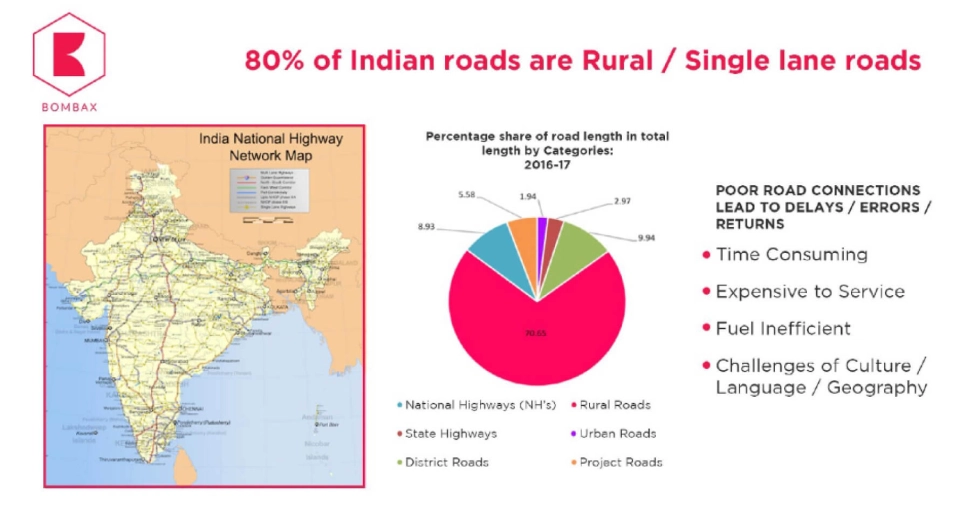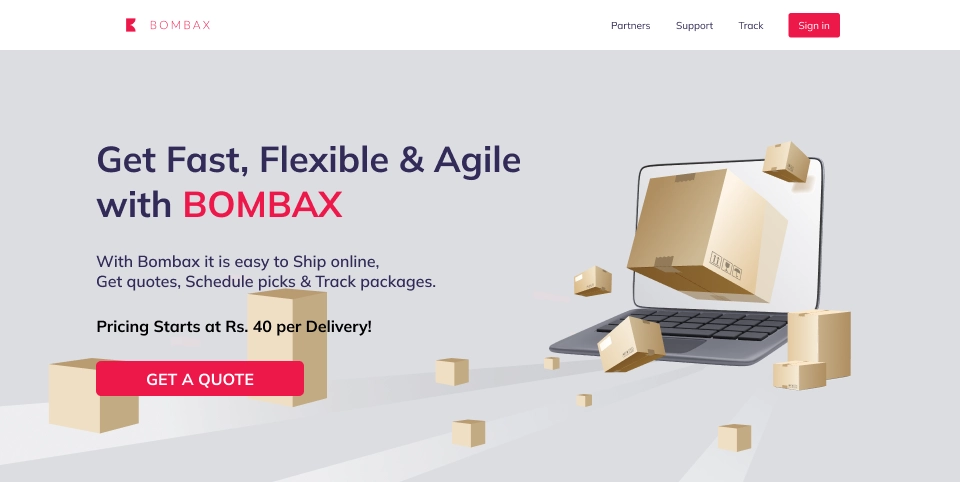Select the Best Logistics Mode for Safe and Reliable Product Delivery in Monsoon

For companies, ensuring that products reach their destinations without damage is crucial, making the selection of the right logistics mode during the monsoon a priority.
Bombax, a leading service provider specializing in road and air transport, understands these challenges well. With a focus on providing reliable and safe delivery even in adverse weather conditions, They offer tailored solutions that meet the specific needs of businesses during the monsoon.
This blog will guide you through the considerations and strategies for selecting the best logistics mode for safe and reliable product delivery during the rainy season.
Understanding the Impact of Monsoon on Logistics
The monsoon season has a profound impact on logistics operations, particularly in regions that experience heavy rainfall. Each mode of transportation—whether road, air, or sea—faces its own set of challenges during this season

Road transportation, for instance, often encounters delays due to waterlogged roads, landslides, and traffic disruptions.
The risk of goods being damaged due to water infiltration is also higher, especially if proper precautions are not taken.
Air transportation, while less susceptible to ground conditions, may still experience delays due to bad weather, leading to cancellations or rescheduling of flights.
Monsoon logistics require careful planning and the implementation of monsoon-specific strategies to mitigate these challenges. Without proper planning, businesses risk facing delays, increased costs, and damage to goods, all of which can affect customer satisfaction and profitability.
Key Considerations for Monsoon Logistics
1. Protecting Goods During the Rainy Season
Protecting goods during rainy season from water damage is crucial. Here’s how you can safeguard your shipments:
- Use Leak-Proof Packaging: Opt for materials like plastic or tarpaulin that are designed to prevent water from seeping in. This is especially important for fragile item shipping, where even minimal moisture can cause significant damage.
- Sealing Techniques: Enhance protection by using shrink wrapping or water-resistant tapes. Proper sealing is essential to prevent any water infiltration.
- Double Packaging for Fragile Items: Consider using a double packaging approach. Start with protective materials like bubble wrap for the item itself, then place it inside a water-resistant outer packaging. This double layer ensures added security.
- Moisture-Absorbing Agents: Add moisture-absorbing agents, such as silica gel packets, inside the packaging. These agents absorb any residual moisture, providing extra protection for your goods.
2. Selecting the Right Shipping Carrier
A reliable shipping carrier selection during the monsoon is critical. Here’s what to consider:
- Experience in Rainy Season Logistics: Select a carrier with a proven track record of handling shipments during the monsoon. This ensures they are equipped to deal with weather-related challenges.
- Evaluate Carrier Reliability: Look into the carrier’s history of timely deliveries during the monsoon and their capability to provide real-time updates on your shipment’s status. This reliability is crucial for maintaining your business operations.
Modes of Transportation in Monsoon
1. Road Transportation
Road transportation remains one of the most common and flexible modes of transport, especially for short and medium distances. However, during the rainy season logistics, and road transport can be fraught with challenges, such as poor road conditions, waterlogging, and landslides.
For businesses relying on road transport, it’s important to work with a logistics provider that understands the intricacies of monsoon logistics.

Bombax offers road transport services that are specifically tailored for the rainy season. This includes
- well-maintained vehicles,
- experienced drivers trained in navigating wet conditions,
- and strategic route planning to avoid flood-prone areas.
By choosing the right road transport services, businesses can ensure that their goods are delivered safely, even during the most challenging weather conditions.
2. Air Transportation
Air transportation is the fastest and most reliable mode of transport, especially for urgent or high-value shipments. During the monsoon, air transport becomes particularly important as it helps avoid the delays that often plague road transport due to bad weather.
Bombax’s air transport services are designed to ensure timely delivery, even when road conditions are unfavorable. With a focus on protecting goods during transit and minimizing the risk of delays, their air transport solutions are ideal for businesses looking to maintain high levels of service during the monsoon.
Factors Influencing the Selection of Transportation Mode
Choosing the right transportation mode during the monsoon involves evaluating several crucial factors. Each plays a vital role in ensuring safe and reliable delivery, especially in adverse weather conditions.
1. Cost/Budget
- Road Transport: Generally more affordable and suitable for short to medium distances. For instance, local deliveries within a city might be more cost-effective by road.
- Air Transport: While more expensive, it offers faster delivery and reduces the risk of delays. This can be particularly beneficial for urgent shipments or high-value goods. For example, if you need to deliver essential medical supplies quickly, air transport might justify the additional cost.
2. Characteristics of Goods
- Fragile Items: Items like electronics or glassware require more protection. Air transport, though pricier, can be advantageous as it often involves faster handling and less exposure to adverse weather compared to road transport.
- Bulk Items: For larger and heavier shipments that are less sensitive to handling, road transport might be more appropriate, provided the route conditions are manageable.
3. Reliability
- Assessing Reliability: Evaluate each transportation mode’s track record during adverse conditions. For instance, if a road transport service frequently faces delays due to flooding, air transport might be a more reliable alternative.
- Provider Expertise: Choose providers with experience in managing deliveries during the rainy season. Bombax, for example, offers reliable road and air transport services specifically designed to handle the challenges of monsoon logistics.
4. Safety
- Robust Safety Features: Ensure the chosen mode has strong safety measures to protect your goods. For instance, various transport services include specialized packaging and handling procedures designed to prevent water damage and secure goods during transit.
- Safety Protocols: Check for safety protocols, such as weather-resistant packaging and secure cargo placement, to minimize the risk of damage.
5. Flexibility
- Road Transport Flexibility: Road transport offers significant advantages for reaching remote or difficult-to-access areas. During the monsoon, when certain routes may be blocked by floods or landslides, road transport can provide more adaptable solutions for last-mile delivery.
- Alternative Routes: Evaluate the ability of the transport mode to adapt to changing conditions, such as re-routing to avoid affected areas.
Essential Precautions for Monsoon Logistics
To further ensure safe and reliable delivery during the monsoon, businesses should implement a range of precautions tailored to the challenges of the season.
1. Vehicle Maintenance
Regular maintenance of vehicles is essential to ensure they are monsoon-ready. This includes checking brakes, tires, wipers, and electrical systems to ensure they are functioning properly and can handle wet conditions.
2. Load Protection
Load protection involves using waterproof coverings, such as tarpaulins, and ensuring that cargo is securely placed to prevent shifting or damage during transport.
3. Route Planning
Effective route planning is crucial during the monsoon. This involves avoiding flood-prone and landslide-prone routes and utilizing real-time weather updates to manage routes efficiently.
Reliable logistics services like Bombax include advanced route planning to ensure that goods are delivered on time, even in challenging conditions.

4. Driver Training and Safety
Training drivers on how to handle vehicles in wet conditions is essential for preventing accidents and ensuring the safe delivery of goods. This includes emphasizing cautious driving practices, such as reducing speed and maintaining a safe distance from other vehicles.
5. Emergency Preparedness
Businesses should be prepared for emergencies, such as vehicle breakdowns or other unforeseen issues. This includes having robust communication systems in place and contingency plans for rerouting shipments or arranging alternative transportation if necessary.
Conclusion
With the right planning and precautions, businesses can ensure that their products are delivered safely and reliably during the unreliable monsoon season. Selecting the right logistics mode—whether road or air—is critical to overcoming the obstacles presented by the rainy season.
Bombax’s expertise in road and air transport makes it an ideal partner for businesses looking to navigate the challenges of rainy season logistics. Bombax ensures that goods reach their destinations on time, regardless of the weather, by prioritizing safety, reliability, and customer satisfaction.
As you plan your logistics strategy for the monsoon, remember to prioritize the protection of goods, a reliable shipping carrier selection, and the implementation of essential precautions. With the right approach, you can maintain high service levels and customer satisfaction, even during the most challenging weather conditions.